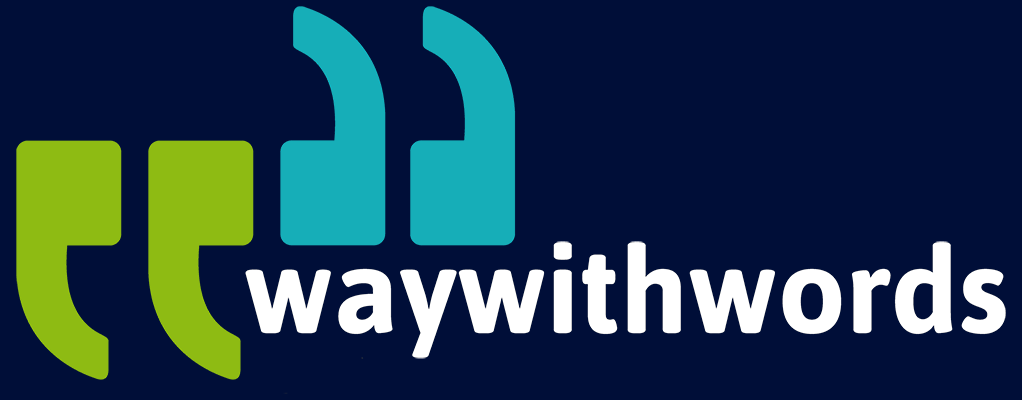Leveraging Speech Data for Predictive Analytics: Insights & Applications
How Can I Leverage Speech Data for Predictive Analytics?
Predictive analytics is a vital capability in modern business and research, enabling organisations to forecast trends, behaviours, and outcomes based on historical and current data. As data sources have diversified, speech data has emerged as an especially valuable input for predictive analytics helping transform many industries such as those in healthcare. By analysing spoken language and its accompanying acoustic features, companies and institutions can gain nuanced insights into human intentions, emotions, and patterns that textual or numerical data alone cannot fully capture.
Speech data predictive analytics involves extracting meaningful information from recorded voice interactions—whether from customer service calls, interviews, meetings, or social media audio—to train models that anticipate future behaviours or events. These models can be used to improve customer retention, detect fraud, optimise operations, and much more.
Despite its potential, many practitioners still have questions when considering speech data for predictive analytics:
- How can speech data improve the accuracy and depth of predictive models beyond traditional datasets?
- Which techniques and technologies are most effective for processing speech data and building robust predictive models?
- What challenges and ethical issues must be addressed when collecting, analysing, and using speech data for prediction?
This short guide aims to answer these questions by exploring the role of speech data in predictive analytics, detailing methods for predictive modelling with speech inputs, examining case studies that demonstrate successes, and outlining future trends and ethical considerations. It is written for data scientists, AI developers, business analysts, technology firms, and financial institutions seeking to harness speech data for improved prediction accuracy and strategic advantage.
By understanding the complexities and opportunities of speech data predictive analytics, organisations can make better-informed decisions and unlock new business value.
Key Topics in Leveraging Speech Data for Predictive Analytics
1. The Role of Speech Data in Predictive Analytics
Speech data introduces a rich layer of information into predictive analytics frameworks that is often missing in conventional data sources. Beyond the words spoken, speech carries paralinguistic cues such as intonation, pitch variation, speech rate, and pauses. These acoustic features provide insight into emotional states, stress levels, hesitation, and other subtle human signals that influence communication.
For instance, in customer service settings, analysing the tone of voice can reveal frustration or satisfaction levels even if the spoken words appear neutral. This allows predictive models to identify at-risk customers before they explicitly express dissatisfaction or terminate services. Similarly, in financial markets, monitoring traders’ speech patterns and sentiment can help forecast market movements or detect insider trading behaviours early.
Moreover, integrating speech data with other organisational data sources—such as CRM records, transaction histories, or web analytics—enables predictive models to consider a broader context. This multi-dimensional data fusion can improve prediction accuracy and provide richer insights that drive more effective business strategies.
Additionally, speech data is increasingly accessible thanks to advancements in voice-activated devices, telephony, and virtual assistants, making it a scalable source for predictive analytics. Properly harnessed, speech data enhances predictive analytics by reflecting real-time, human-centred signals that numerical data alone cannot capture.
2. Techniques for Predictive Modelling with Speech Data
Using speech data for predictive analytics requires several distinct processing and analytical techniques. The journey from raw audio to actionable prediction involves multiple stages:
- Speech-to-Text Transcription: The first step is converting audio signals into text, often using automatic speech recognition (ASR) systems. Accurate transcription is critical because many predictive models rely on natural language processing (NLP) of the text content. Advances in ASR technology, including deep learning models, have improved transcription accuracy across languages and accents.
- Acoustic Feature Extraction: Besides the textual content, extracting acoustic features such as pitch, loudness, jitter, shimmer, and spectral properties captures vocal nuances. These features are numeric representations of voice characteristics and help detect emotions, stress, or deception.
- Natural Language Processing (NLP): The transcribed text is analysed to detect sentiment, intent, topics, and named entities. Sentiment analysis classifies positive, negative, or neutral tones, while intent detection identifies user goals or actions.
- Feature Engineering and Fusion: Combining acoustic and linguistic features is often more powerful than using either alone. This fusion requires careful feature selection and transformation to prepare inputs for predictive models.
- Machine Learning and Deep Learning Models: Various algorithms can be applied, including Random Forests, Gradient Boosting Machines, Support Vector Machines, and Neural Networks. Recent advances include transformer-based architectures that handle sequences effectively. Models are trained to predict specific outcomes such as customer churn, credit risk, or health deterioration.
- Model Evaluation and Validation: Predictive models must be rigorously evaluated using metrics like accuracy, precision, recall, F1 score, and ROC-AUC. Cross-validation and testing on unseen data ensure generalisability.
In summary, the combination of advanced speech processing, NLP, and machine learning forms the technical backbone of predictive analytics speech data solutions.
3. Data Quality and Annotation Challenges
Speech data is more challenging than many other data types due to its complexity and variability. Background noise, speaker accents, overlapping speech, and variable audio quality can negatively impact transcription and analysis accuracy. These challenges can propagate errors into predictive models, reducing their reliability.
Moreover, labelled datasets are crucial for supervised learning models, but annotating speech data is labour-intensive and requires domain expertise. Labels may include emotional states, call outcomes, or speaker demographics. The cost and difficulty of annotation often limit the amount of high-quality training data available.
Techniques to mitigate these challenges include:
- Using noise reduction and audio enhancement tools to improve signal quality.
- Applying transfer learning and data augmentation to maximise model performance with limited data.
- Employing crowdsourcing carefully with clear guidelines to scale annotations.
- Utilising semi-supervised and unsupervised learning methods to leverage unlabelled speech data.
High-quality, well-annotated speech datasets underpin successful predictive analytics speech data projects.

4. Case Studies on Predictive Analytics Successes Using Speech Data
Practical examples highlight how speech data predictive analytics delivers value across sectors:
- Healthcare: Hospitals have implemented predictive models analysing doctor-patient conversations to identify patients at risk of deterioration. For example, subtle changes in voice patterns or repeated mentions of symptoms can trigger early interventions, improving patient outcomes.
- Telecommunications: Providers analyse customer service call recordings to predict customer churn. By detecting dissatisfaction and frustration through speech patterns and sentiment, companies target retention efforts proactively. One telecom firm reportedly reduced churn by 15% within a year of adopting these techniques.
- Finance: Trading firms monitor floor conversations to detect insider trading and compliance breaches. Voice stress analysis combined with transaction data has improved detection rates significantly.
- Retail and Marketing: Analysing customer sentiment during sales calls or social media voice messages helps forecast purchasing behaviour and tailor marketing strategies accordingly.
These case studies demonstrate that combining speech data with predictive analytics not only enhances forecast accuracy but also enables early, actionable insights that drive business impact.
5. Future Trends in Predictive AI with Speech Data
Predictive analytics speech data is an active area of research and development, with several promising trends:
- Real-time Predictive Analytics: Advances in streaming data processing allow companies to analyse speech data as it is generated, providing immediate insights and enabling on-the-fly decision-making.
- Multimodal Predictive Models: Integrating speech data with facial expressions, gesture analysis, and physiological sensors creates more holistic predictive systems.
- Explainable AI: As models become more complex, efforts focus on making predictions interpretable to end-users, increasing trust and regulatory compliance.
- Cross-lingual and Multilingual Models: Expanding capabilities to support predictive analytics on speech data from multiple languages broadens applications in global markets.
- Edge Computing: Deploying speech data processing closer to data sources (e.g., on devices) improves speed and privacy.
These innovations will extend the reach and effectiveness of speech data predictive analytics in diverse industries.
6. Ethical Considerations in Predictive Data Usage
Using speech data involves sensitive information, raising important ethical questions:
- Privacy and Consent: Collecting speech data requires clear, informed consent. Organisations must ensure compliance with data protection laws such as GDPR, and maintain strict data security.
- Bias and Fairness: Speech models may inadvertently discriminate based on accent, gender, or ethnicity if training data is unbalanced. Regular auditing and bias mitigation strategies are essential.
- Transparency: Users should understand how their speech data is used and what decisions are influenced by predictive analytics.
- Data Minimisation: Collecting only necessary speech data reduces risk.
Organisations adopting speech data predictive analytics must embed ethical practices to maintain user trust and comply with legal standards.
7. Integration of Speech Data with Existing Business Intelligence
Speech data predictive analytics gains further power when integrated with other business intelligence (BI) tools and data repositories. Combining voice-derived predictions with transactional data, web analytics, or customer profiles enables holistic insights.
For example, a retailer might combine speech-based customer satisfaction predictions with purchase histories to personalise offers. Similarly, a bank may integrate speech-derived fraud risk scores with transaction monitoring systems.
APIs and data warehousing solutions facilitate this integration, turning speech insights into actionable strategies across departments.

8. The Importance of Scalable Speech Data Collection
For predictive analytics to be truly robust and effective, it must be supported by large and diverse speech datasets. The quality and variety of speech data directly influence the accuracy and reliability of predictive models. Without extensive data that captures different speakers, accents, contexts, and environments, models may perform poorly when applied to new, real-world scenarios. Therefore, scalable speech data collection is critical to building predictive analytics systems that are both accurate and generalisable.
There are several key methods for gathering large volumes of speech data efficiently:
- Telephony Systems: Many organisations use telephony infrastructure that automatically records and stores phone conversations. Call centres, for example, generate vast amounts of audio data daily, capturing customer interactions across diverse topics and languages. These recordings serve as a rich resource for training predictive models focused on customer sentiment, churn prediction, and operational efficiency.
- Mobile Applications: Smartphones and other mobile devices offer convenient platforms to collect voice inputs from users. Mobile apps designed for voice commands, surveys, or conversational agents can capture natural speech in various everyday contexts. This data helps create predictive models that reflect real user behaviour outside controlled environments.
- Crowdsourcing Platforms: Targeted data gathering through crowdsourcing enables the collection of speech samples from a broad demographic. Organisations can request recordings under specific conditions, accents, or languages to fill gaps in their datasets. Crowdsourcing is particularly useful for creating balanced, inclusive speech corpora required for equitable predictive analytics.
- IoT Devices: The growing network of Internet of Things (IoT) devices equipped with microphones captures ambient speech in homes, offices, and public spaces. Smart assistants, security systems, and connected appliances provide continuous streams of audio data that enrich predictive models with contextual environmental sounds and spontaneous speech.
Handling these vast volumes of speech data requires scalable infrastructure. Cloud storage solutions offer virtually unlimited capacity for storing audio files, while distributed computing platforms allow efficient processing and analysis of large datasets. This combination ensures that data pipelines can handle growing inputs without bottlenecks.
Scalable collection methods also support ongoing model refinement. Speech data continually changes with evolving language use, emerging slang, and new communication channels. By maintaining an up-to-date, diverse dataset, organisations can retrain models to stay relevant and accurate.
In conclusion, scalable speech data collection is foundational for effective predictive analytics. Leveraging telephony recordings, mobile app inputs, crowdsourcing, and IoT devices provides the volume and diversity needed to build powerful, adaptable predictive models that perform well across varied real-world conditions.
9. Customisation and Domain-Specific Speech Models
Effective use of speech data for predictive analytics often hinges on how well the models understand the specific language and terminology of the industry in question. Industry-specific language, jargon, acronyms, and specialised expressions vary greatly between sectors. Without tailoring, general-purpose speech models may struggle to accurately transcribe or interpret these nuances, resulting in lower prediction accuracy and less meaningful insights.
Customised speech models address this challenge by being trained explicitly on domain-specific datasets that reflect the unique vocabulary and communication styles found in particular fields. This tailored approach involves several key components:
Domain-Focused Vocabulary and Language Models
Custom language models incorporate specialised dictionaries and phrase lists that include technical terms, acronyms, and common expressions used in the target industry. For example, healthcare providers rely on complex medical terminology and abbreviations, while legal professionals use precise legal phrases and courtroom-specific language. Including these terms in the model’s vocabulary helps ensure accurate transcription and better semantic understanding.
Acoustic Model Adaptation
Beyond vocabulary, acoustic models can be adapted to recognise industry-specific speech patterns and acoustic environments. For instance, models trained on medical consultation recordings learn to filter out clinical background noises and identify distinct speaker voices like doctors and patients. Similarly, models for call centres or trading floors adjust to particular ambient sounds or speaker accents common in those settings.
Tailored Annotation and Training Data
Successful customisation requires high-quality annotated data relevant to the domain. Labels may include specialised categories, sentiment tailored to industry concerns, or event markers such as symptoms in healthcare or legal case outcomes. This detailed annotation supports training models that better capture meaningful patterns for prediction.
Benefits of Customisation
Domain-specific speech models deliver significantly improved transcription accuracy and predictive performance compared to generic models. They enable organisations to extract actionable insights from conversations, calls, or meetings that would otherwise be lost or misinterpreted. For example, healthcare predictive models can identify early signs of patient risk by recognising symptom discussions, while financial firms can detect compliance breaches from trader interactions more reliably.
Challenges and Considerations
Building customised models requires access to sufficient domain-relevant speech data, which can be costly or sensitive. Additionally, ongoing updates and retraining may be necessary as language and terminology evolve. Nonetheless, investing in customisation is essential for organisations aiming to maximise the value of speech data in their predictive analytics efforts.
In summary, tailoring speech models to the specific language and acoustic characteristics of an industry is crucial for unlocking the full potential of speech data. This custom approach enhances both transcription fidelity and the accuracy of predictive insights, providing a strong foundation for data-driven decision-making across specialised fields.
10. Measuring Predictive Model Performance with Speech Data
Evaluating predictive analytics speech data models extends beyond common metrics:
- Assess transcription error rates as they impact downstream analysis.
- Validate emotional or sentiment classification accuracy.
- Conduct user studies to verify real-world effectiveness.
- Continuously monitor for model drift and update with new speech data.
Effective measurement ensures predictive models deliver reliable, actionable results.
Key Tips for Using Speech Data in Predictive Analytics
- Invest in high-quality, annotated speech datasets to train reliable models.
- Combine both acoustic and linguistic features for enhanced prediction accuracy.
- Ensure transparent data collection with user consent and strong privacy safeguards.
- Use scalable cloud-based platforms for speech data storage and processing.
- Tailor predictive models to your industry’s language and operational context.
Using speech data for predictive analytics unlocks new opportunities to understand and anticipate human behaviour more deeply than traditional data alone. By harnessing both the spoken words and the rich acoustic signals behind them, predictive models can deliver more nuanced and accurate forecasts.
Throughout this short guide, we have examined the central role of speech data in predictive analytics, detailed the techniques that underpin successful models, and highlighted real-world applications where these methods have driven tangible business benefits. Future developments promise even more sophisticated and immediate predictive insights, expanding possibilities further.
At the same time, ethical considerations remain critical. Privacy, consent, and fairness should not be overlooked in pursuit of predictive power. Organisations must balance innovation with responsibility.
My key piece of advice is to approach speech data predictive analytics as a strategic investment requiring quality data, advanced analytics expertise, ethical vigilance, and ongoing model refinement. This approach will position businesses to harness speech data effectively—turning human voice into foresight that powers smarter decisions and lasting success.
Further Speech Data Resources
Wikipedia: Predictive Analytics – This article provides an overview of predictive analytics methodologies and applications, essential for understanding how to leverage speech data for predictive modelling.
Featured Transcription Solution: Way With Words: Speech Collection – Way With Words empowers predictive analytics with rich speech data insights, enabling accurate predictions and strategic decision-making. Their solutions support diverse industries in harnessing predictive AI for business growth and innovation.
